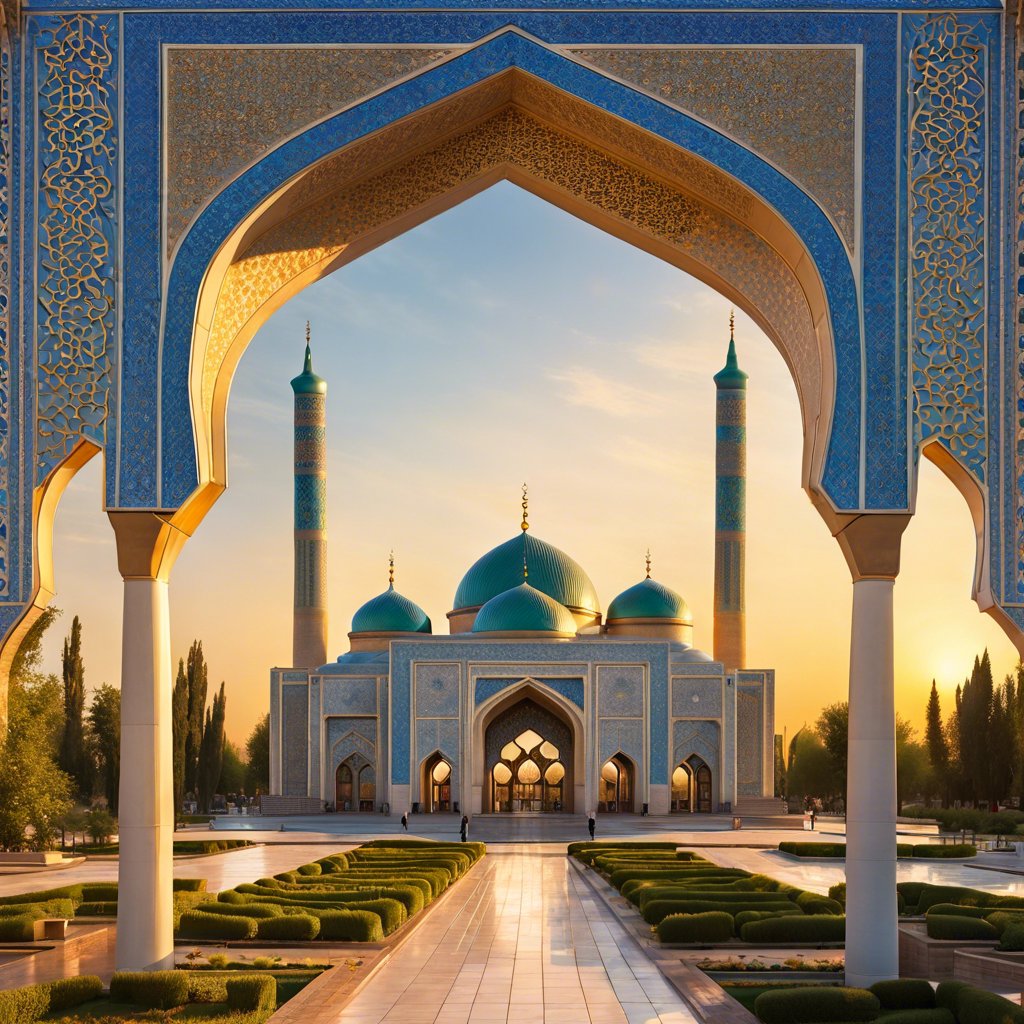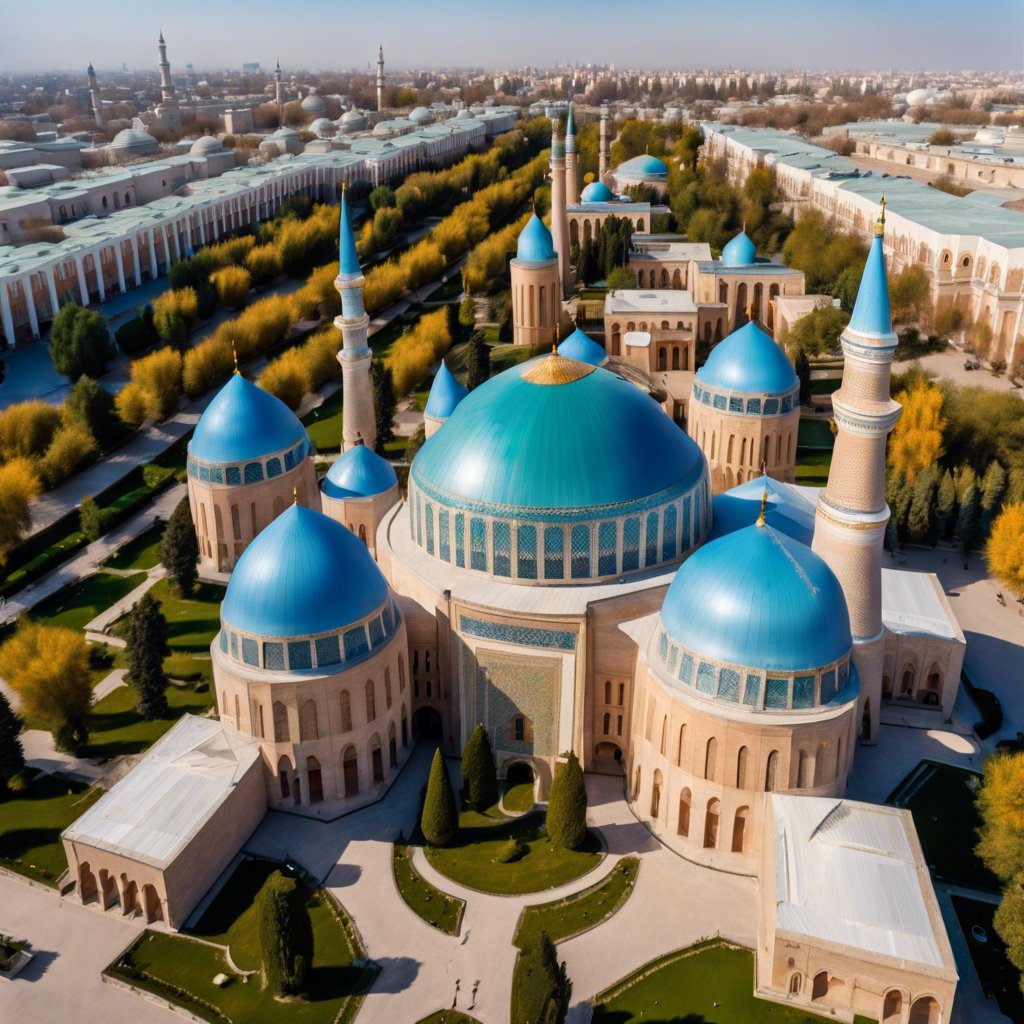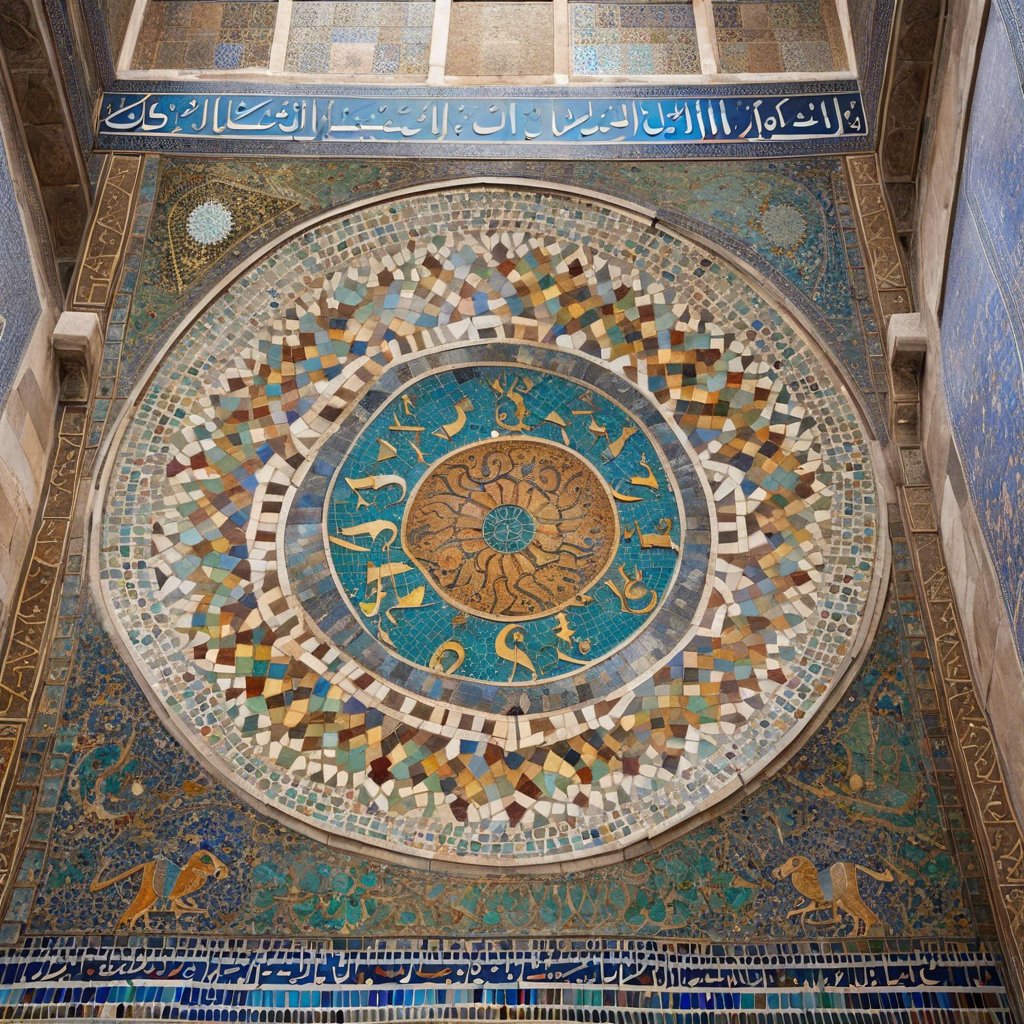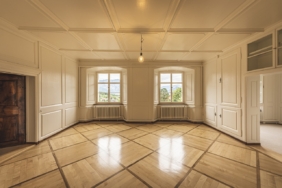The Hazrat Imam Complex, located in Tashkent, the capital of Uzbekistan, is one of the rare examples of Central Asian architecture. This complex attracts attention with its structures that bear traces of medieval architecture. Located in the old city of Tashkent, this historical site is an important place to visit, attracting the attention of both local and foreign tourists.
The complex takes its name from the famous religious scholar Abu Bakr Kaffal ash-Shashi, who lived in Tashkent in the 10th century. This religious figure, known as “Hazrat Imam”, has an important place in the spiritual life of the region. The Hazrat Imam Complex is among the most important historical structures of the capital and contains many important structures. These structures include the tomb of Kaffal Shashi, the Barakhan and Muyi Mubarak madrasahs, the Tilla Sheikh and Hazrat Imam mosques, the Religious Administration of Muslims of Uzbekistan and the Imam Bukhari Tashkent Islamic Institute.
In the middle of the complex is a large area where the Eid prayers are performed. At the back is the tomb of Kaffal al-Shashi, and the mausoleum over this tomb was built in 1541 by the famous architect Ghulam Hussein.
Barakhan Madrasah
One of the oldest structures in the complex, Barakhan Madrasah, was built in the 16th century. This madrasah is reminiscent of the historical madrasahs of Samarkand with its medieval architecture, eye-catching architecture and detailed patterns. The madrasah has a total of 34 rooms, a prayer room, lecture halls and a large inner courtyard. It reflects traditional medieval structures with its blue domes on two corners and a large entrance gate.
The semi-dome above the entrance door of the madrasah is a unique example of Central Asian Turkish architecture. The blue patterned motifs on both sides and above the door and the verses from the Quran show that this madrasah bears similar traces to other historical structures in the region.
This building, which operated as a madrasah until the beginning of the last century, was used as a workers’ dormitory and warehouse during the Soviet former period. Later, it began to function as the first building of the Religious Administration of Muslims of Uzbekistan. The madrasah also houses the tomb of Barakhan, one of the khans of the Chagatai Khanate who ruled in the 13th century. The rooms in the madrasah are now used as shops selling souvenirs.
Muyi Mubarak Madrasa
Another important structure in the complex is the Muyi Mubarak (Beard-i Sharif) Madrasah, built in 1856-1857. This madrasah was named for the preservation of the Beard-i Sharif of the Prophet Muhammad. This madrasah, which currently serves as a museum, is of great importance in terms of the preservation of the Quran, known as the “Mushaf of Osman”, which is written on a gazelle skin on which the blood of the Prophet Osman was shed. It is thought that this Quran was brought to Samarkand from Baghdad in the 14th century by Emir Timur, the founder of the Timurid State.
This Quran, which was taken to St. Petersburg in 1869 after the Russians took over Central Asia, was brought back in 1923 and preserved in the Muyi Mubarak Madrasa, which was then the museum of the Muslim Religious Administration of Uzbekistan in Samarkand.
Tilla Sheikh and Hazrat Imam Mosques
The complex also includes the Tilla Sheikh Mosque, built in the late 19th century, and the Hazrat Imam Mosque, built in 2007 after Uzbekistan gained independence. These mosques contribute greatly to the spiritual atmosphere of the complex.
The Islamic Institute of Uzbekistan stands out as the only higher education institution that provided education on the religion of Islam during the former Soviet Union. This institute is an institution where important religious scholars such as the last head of the Religious Administration of Muslims of Central Asia and Kazakhstan during the former Soviet Union, Muhammad Sadiq Muhammad Yusuf, the former President of Chechnya, which is a part of the Russian Federation , Ahmet Kadyrov, and the head of the Administration of Muslims of the Caucasus, Allahshukur Pashazadeh, received their education.
Hazreti Imam Complex welcomes many local and foreign tourists every day and offers a unique experience to its visitors with its historical texture.















